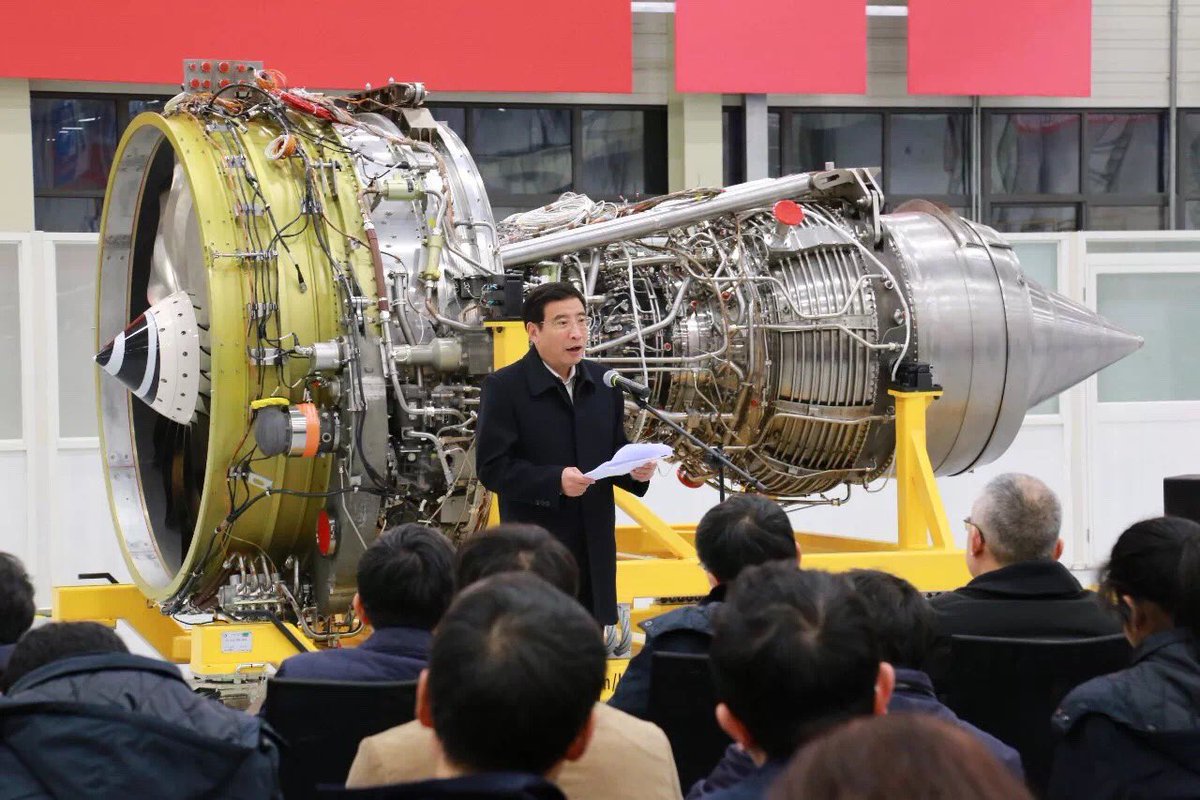China completes assembly of first high-bypass turbofan engine
29 DECEMBER, 2017
SOURCE: FLIGHTGLOBAL.COM BY: STEPHEN TRIMBLE
A Chinese manufacturer has completed an 18-month assembly process for the first CJ-1000AX demonstrator engine for the Comac C919 airliner, a government ministry says on 29 December.
The demonstrator will be used to help validate the engine’s advanced technologies, China’s Ministry of Industry and Information Technology (MIIT) says in a news release.
China plans to build 24 more CJ-1000A prototype engines to support an airworthiness certification campaign, with entry into service targeted after 2021.
The news release reveals two new dimensions of the indigenous Chinese rival to the CFM International Leap-1C to power the C919.
The CJ-1000AX has a diameter of 1.95m (76.8in) and a length of 3.29m (10.7ft), the release says. That compares to the 1.98m diameter and 3.32m length of the Leap-1C. The shorter length of the CJ-1000AX is likely explained by a design that compared to the Leap-1C uses one fewer stage of rotating blades in the low pressure turbine.
In many other respects, the Chinese manufacturer – AECC Commercial Aircraft Engine (ACAE) – and CFM use a similar configuration, with a two-spool layout, featuring a one-stage fan, three-stage booster, 10-stage high-pressure compressor and two-stage high-pressure turbine. The CJ-1000AX uses six stages in the low pressure turbine, compared to seven in the Leap-1C.
But the engine designs also reveal sharp differences in the use of advanced technologies. ACAE has not selected a fan drive gear system for the CJ-1000A, but it does use Rolls-Royce-style hollow-titanium, wide-chord fan blades, according to the MIIT release. By contrast, CFM uses an equal number of 18 blades, but they are made of carbonfibre.
The MIIT release also discloses that ACAE is 3D printing the fuel nozzles for the CJ-1000AX’s single-annular combustor.
In 2012, a Texas-based consultancy named Lucintel published a turbofan market forecast showing plans by China to develop three versions of the CJ-1000. A roughly 25,000lb-thrust CJ-1000AX demonstrator would come first, followed by a 28,000lb-thrust “A” version for production and finally a roughly 27,000lb-thrust “B” model for extended range aircraft.




